Community Volunteers provide a wide range of support for the Incident Response Teams.
During a disaster, a diverse group of volunteers is required to handle all aspects of response and recovery. All efforts will be made to match you with your areas of interest and experience. There are specific training recommendations for each role, and we encourage you to meet our team leaders and investigate your options within Napa CART.
 We’d love to have you! The first step in joining our team is to set up a new profile in Better Impact, Napa CART’s volunteer management system. The information you enter in your Better Impact profile will be used by Napa CART to gauge your interest and experience in the various components of disaster response and to assign you to roles that best align with your skills and interests and Napa CART’s current needs.
We’d love to have you! The first step in joining our team is to set up a new profile in Better Impact, Napa CART’s volunteer management system. The information you enter in your Better Impact profile will be used by Napa CART to gauge your interest and experience in the various components of disaster response and to assign you to roles that best align with your skills and interests and Napa CART’s current needs.
*Note that assignments may change as you acquire experience and training and as Napa CART’s needs change.
(opens Better Impact Form in a new tab)
If you are new to Better Impact, this document describes how to do common tasks, including setting up a new profile: Napa CART Better Impact Training (pdf document will open in new tab).
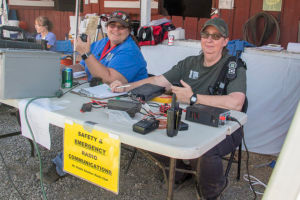
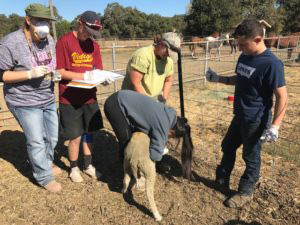
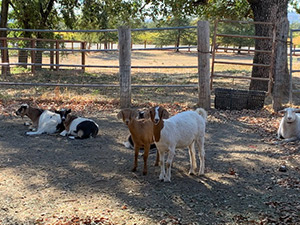
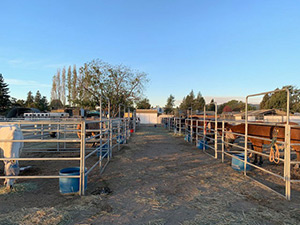
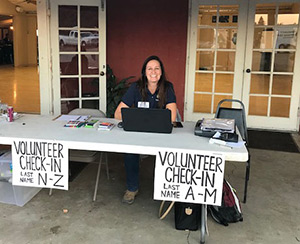
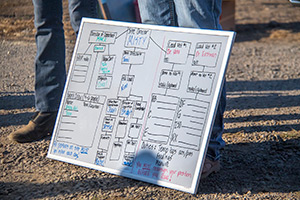

Areas of Focus for Volunteers
Livestock Shelter:
This team sets up the shelter, intakes animals, tracks their location, feeding, and health, maintains biosecurity, facilitates owner visits, exercises, and discharges hoofed and winged animals. Napa CART has agreements with Napa Valley Horseman’s Association, Valley Brook Equestrian Center, and other locations as pre-determined evacuation sites.
Companion Animal Shelter:
This team sets up the shelter, intakes animals, tracks location, feeding, and health, maintains biosecurity, facilitates owner visits, exercises, and discharges small companion animals in conjunction with Napa County Animal Services.
Evacuation/Animal Search and Rescue:
This team works together to remove animals prior to or after disaster events and deliver them to designated shelters or veterinary hospitals. The evacuation teams often consist of a convoy of pilot car, radio operator, truck and trailer, supply truck, and animal handling personnel. This team may go into warm zones with County escort, and a high level of training is required for this role. Good to excellent hauling skills are a prerequisite for evacuation duty.
Shelter in Place:
This team is dispatched based on owner request after a disaster to triage, feed, and monitor animals remaining in evacuated areas. This team often consists of a convoy of vehicles, similar to evacuation teams, and requires diverse animal handling and communication skills. A high level of training is required for this role.
Communications:
This team maintains radio contact between Napa CART leaders, First Responders, Evacuation and Shelter in Place teams, Dispatch, and the Shelters. Radio knowledge and operating skills are enhanced and developed through training, drilling, and responding. Napa CART works closely with Napa CERT to facilitate communications and augment HAM radio capacity.
Hotline and Dispatch:
This team sets up and operates a hotline receiving requests for evacuation and shelter in place. The Dispatch component tracks team activity in the field and organizes response and continued care.
Volunteer Management:
This team registers and tracks training attendance, answers volunteer questions, assigns volunteers to response components, and coordinates volunteer scheduling during an event.
Donation Management:
This team(s) works at shelters to organize unsolicited incoming donated supplies, unloads hay and materials, and sorts donations to assist those who have lost everything. Ideally, this team works to create assets for the recovery phase of a disaster, arrange hay storage, feed delivery, etc.
Reunification / Foster Care:
This team works with shelter personnel to reunify unclaimed animals with owners or to arrange foster care for animals with no home to return to.
Community Outreach:
This team collaborates to represent Napa CART at community events and to make presentations detailing the work of Napa CART. This group works with the Public Information Officer and the historian to raise public awareness and support for CART activities.
Donor Relations and Grants:
This team networks to create donor interest in CART activities and explore options for CART funding and expansion.